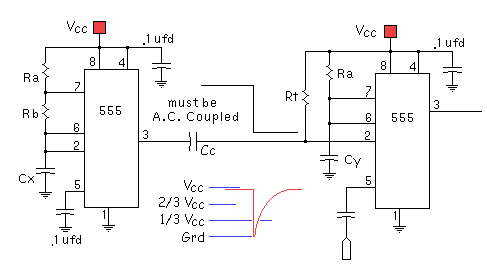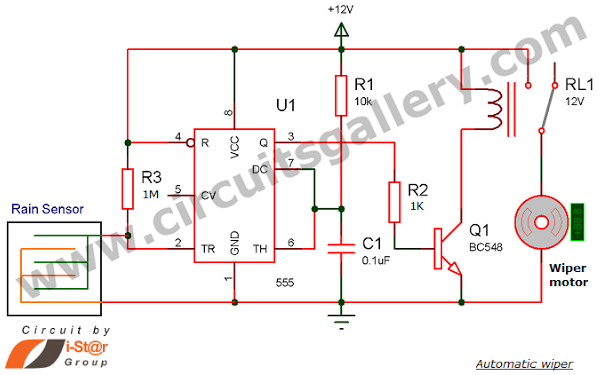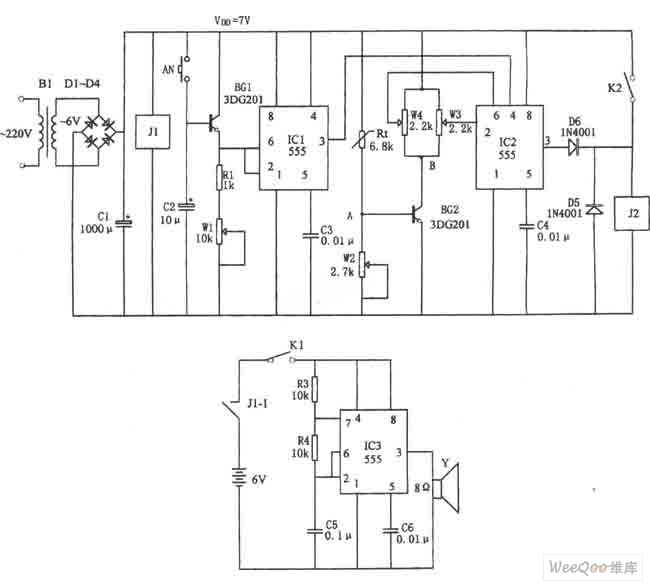
Oscilloscope-Triggered Sweep using 555 IC

The 555 timer can be utilized to reduce the cost of incorporating a triggered sweep into an economical oscilloscope. The timer is activated by the input operational amplifier of the circuit.
The application of the 555 timer in an oscilloscope circuit provides a cost-effective solution for generating a triggered sweep. The 555 timer operates in either monostable or astable mode, allowing it to produce precise timing intervals or continuous waveforms, respectively. In this configuration, the input operational amplifier serves as the signal detection mechanism, monitoring the incoming signal and providing the necessary trigger to the 555 timer.
When the input op-amp detects a threshold voltage, it sends a trigger pulse to the 555 timer. In monostable mode, this pulse initiates a single output pulse of a predetermined duration, which can be adjusted by changing the resistor and capacitor values connected to the timer. This output pulse can then be used to drive the horizontal deflection system of the oscilloscope, allowing for a synchronized display of the incoming signal.
In astable mode, the 555 timer continuously oscillates, generating a square wave output that can be used for repetitive sweep signals. This mode is particularly useful for applications requiring a stable and continuous display of waveforms. The frequency of the oscillation can be adjusted by selecting appropriate resistor and capacitor values, allowing for flexibility in the oscilloscope's sweep speed.
The integration of the 555 timer into an oscilloscope circuit not only enhances functionality but also significantly reduces the overall cost compared to more complex timing circuits. This makes it an ideal choice for budget-conscious designs without compromising performance. Proper consideration of the component values and circuit layout is essential to ensure optimal operation and reliability of the oscilloscope.We can use the 555 timer to hold the cost down of adding a triggered sweep to an economy oscilloscope. The timer is triggered by the circuit`s input op amp,.. 🔗 External reference
The application of the 555 timer in an oscilloscope circuit provides a cost-effective solution for generating a triggered sweep. The 555 timer operates in either monostable or astable mode, allowing it to produce precise timing intervals or continuous waveforms, respectively. In this configuration, the input operational amplifier serves as the signal detection mechanism, monitoring the incoming signal and providing the necessary trigger to the 555 timer.
When the input op-amp detects a threshold voltage, it sends a trigger pulse to the 555 timer. In monostable mode, this pulse initiates a single output pulse of a predetermined duration, which can be adjusted by changing the resistor and capacitor values connected to the timer. This output pulse can then be used to drive the horizontal deflection system of the oscilloscope, allowing for a synchronized display of the incoming signal.
In astable mode, the 555 timer continuously oscillates, generating a square wave output that can be used for repetitive sweep signals. This mode is particularly useful for applications requiring a stable and continuous display of waveforms. The frequency of the oscillation can be adjusted by selecting appropriate resistor and capacitor values, allowing for flexibility in the oscilloscope's sweep speed.
The integration of the 555 timer into an oscilloscope circuit not only enhances functionality but also significantly reduces the overall cost compared to more complex timing circuits. This makes it an ideal choice for budget-conscious designs without compromising performance. Proper consideration of the component values and circuit layout is essential to ensure optimal operation and reliability of the oscilloscope.We can use the 555 timer to hold the cost down of adding a triggered sweep to an economy oscilloscope. The timer is triggered by the circuit`s input op amp,.. 🔗 External reference





